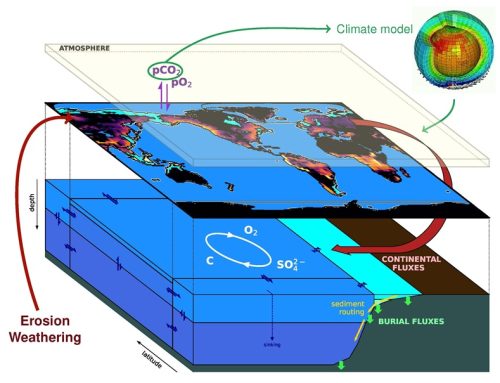Nous aurons le plaisir d’accueillir Calvin Beck le jeudi 6 novembre à 13h au 2ème étage du bâtiment 504 pour un séminaire intitulé : “The Hidden Hazard of Permafrost Landslides and the Formation of Molard Morphologies”.
Résumé :Current climate change trends cause a receding and warming of permafrost especially in mountain regions with areas of discontinuous to isolated permafrost. If ground ice degrades in mountain slopes, this can result in more frequent slope failures. Permafrost molards are cones of loose debris that can be found in landslide deposits in periglacial terrains, originating from ice-cemented blocks of debris that are transported down-slope within the landslide. Since molards are proposed to originate from ice-cemented blocks of debris being transported within the landslide material and degrade into conical mounds over time, they indicate the presence of an area of discontinuous permafrost at the level of the detachment zone. However, the number of reported landslides containing molards is limited and, so far, their formation has not been observed in the field.
To understand the physical processes leading to the formation of molards and how these processes determine the final molard shape we performed a multidisciplinary comparative field and laboratory study. We performed seven case studies in Alaska and Iceland by obtaining digital terrain models of the molards deposits by drone-based photogrammetry, to determine their distribution and individual shape parameters and investigated the molards’ material composition. To understand the degradation processes of the initial ice-cemented block into a molard, we degraded ice-cemented blocks under controlled laboratory conditions, enabling us to isolate the processes of molard formation for a wide parameter space.
In general the initial block’s fracture surfaces, material composition, and the location of its degradation determine the resulting molards’ shape and size. The dominant degradation process of the initial ice-cemented block depends on the complexity of the degrading material, especially the content of the fine material which then determines the final morphology. Here, precipitation is a key process in further degrading cohesive material by mobilizing silts and clays. Increased ice content increases the degradation duration, and results in increased grain mobility, resulting in shallower molard flank angles.
Identifying permafrost molards and distinguishing them from similar morphologies in landslide deposits can therefore be a useful proxy to monitor mountain permafrost degradation and quantify the ground ice distribution in the mountain slope before the slope failure.


